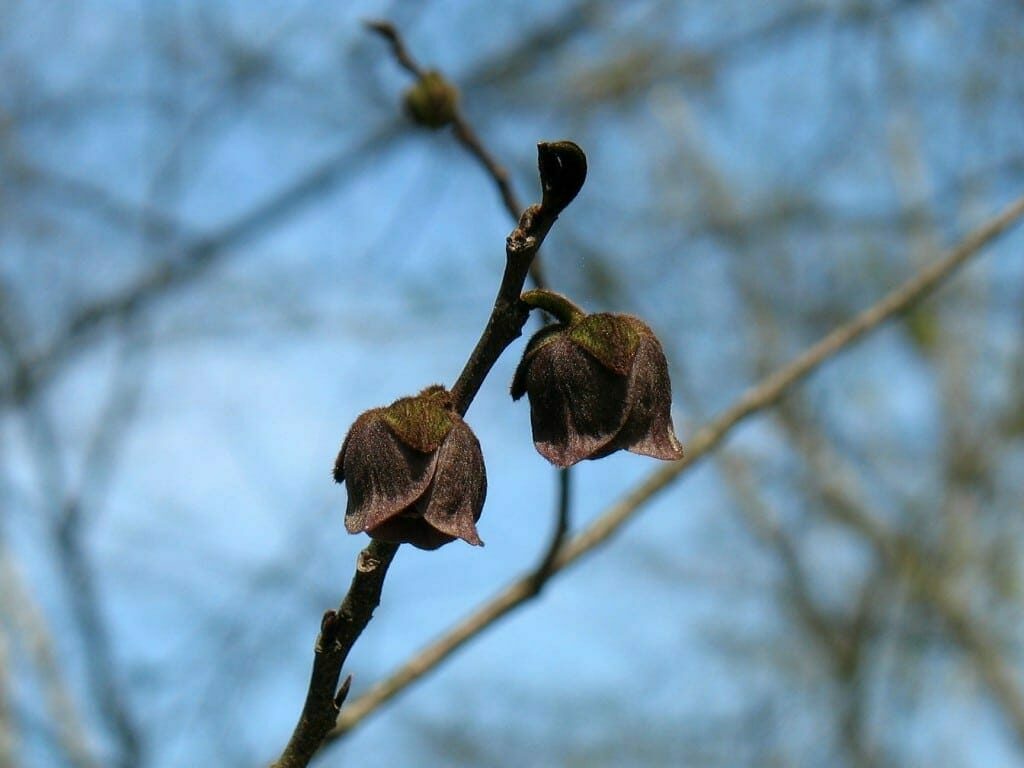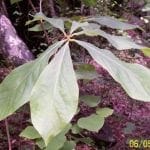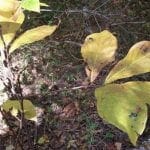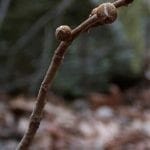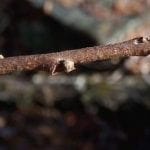- Flower
- Summer foliage
- Fall foliage
- Flower buds in winter
- Winter twig
Scientific Name:
Asimina triloba
Common Name:
Pawpaw
Scientific Name Pronounciation:
(a-SEE-mee-nuh try-LO-buh)
Plant Type:
Tree
Plant Hardiness Zones:
5-9
Plant Hardiness Zone(s):
Usual Size:
5-20 ft. H; sometimes as tall as 30 ft.
Flower:
Dark purple-maroon; three lobed; blooms in mid-spring, but is inconspicuous.
Bloom Time Notes:
Spring
Leaf:
Large, 3-6 inches long, elliptical; slightly drooping; medium green.
Fruit:
Fruit is oblong and yellowish green; matures in fall to a golden color.
Wildlife:
Fruit is very attractive to small mammals.
Natural Habitat:
Low bottom woods, wooded sloped, ravines, and along streams.
Propagation:
Bloom Time:
Sun or Shade:
Companion Plants:
Cultural Notes:
Easily grown in average, medium-wet to wet, well-drained soil; full sun to part shade, although if grown in full shade it will become leggy; in its natural habitat it often spreads by root suckers to form thickets; found throughout most of the eastern half of United States including parts of Texas but not in the upper New England states; should be planted in zones with 160 or more frost-free days per year.
The fruit is edible, enjoyed by humans and eagerly sought by wildlife (possum, raccoon, etc.); said to taste like a combination of other fruit, including pineapple, guava, banana, etc.
Other Common Names: Custard-Apple, Custard-Banana

